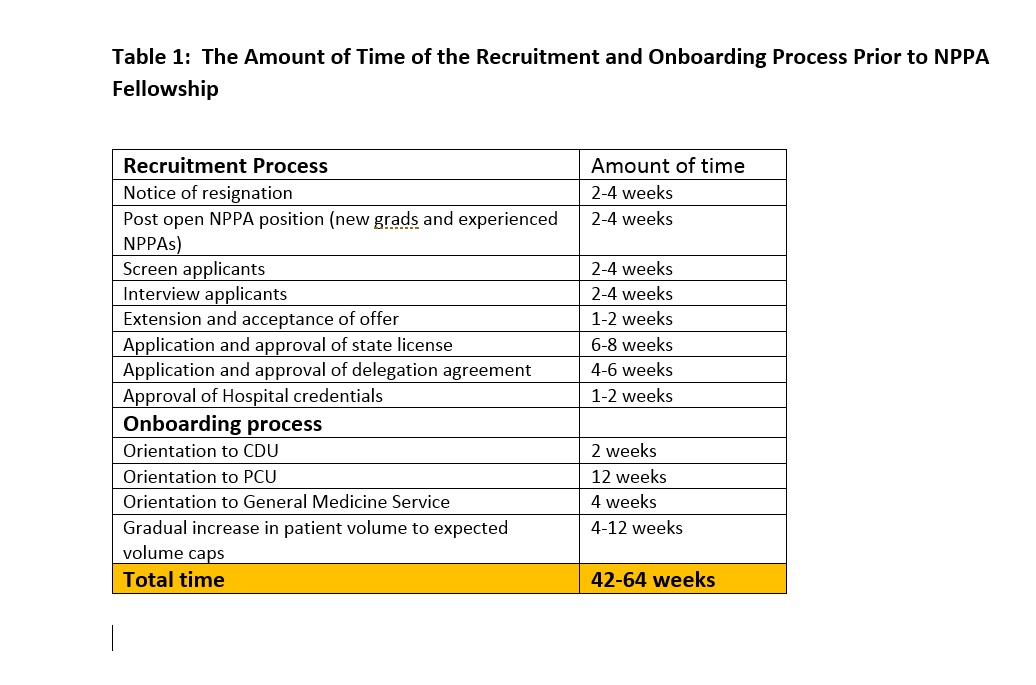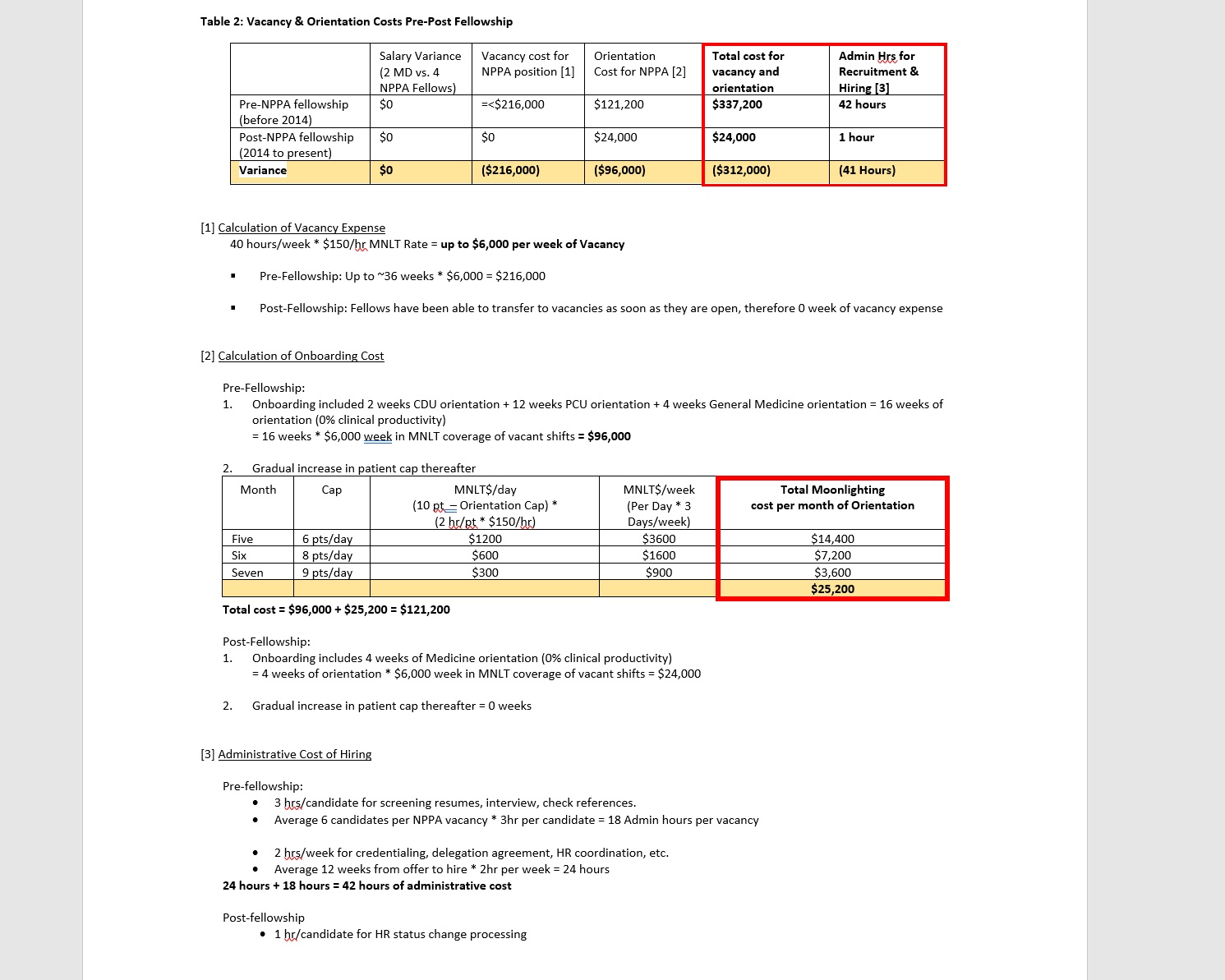Background: There are approximately 7,000 Physician Assistants (PAs) and 10,000 Nurse Practitioners (NPs) working as hospitalists nationally. About 63% of hospitalist groups utilize NPs/PAs. The demand for hospitalists continues to exceed the supply and has led to increased utilization of NPs/PAs in hospital medicine. NP/PAs receive very limited inpatient training and there is wide variation in their clinical abilities after graduation, so hiring new NP/PA graduates as hospitalists requires a longer and more rigorous on-boarding process. This extended on-boarding is costly because they are receiving a full hospitalist’s salary while not yet able to generate a full NP/PA hospitalist’s level of productivity.
Purpose: The purpose of our program was to establish a cost-effective process for training NP/PAs as successful hospitalists, and thereby to facilitate the availability of highly skilled individuals to expediently fill any NP/PA vacancies within our practice.
Description: Staffing vacancies on our hospitalist service are expensive; patient volumes must be covered regardless, so costly moonlighting is incurred. However, hospitalist NP/PA vacancies were going unfilled for 9 months or more, and new NP/PA hires could take up to 18 months to work independently. The reasons for these delays were multifactorial (Table 1). In 2014, a one-year NP/PA fellowship was established. Four fellows are accepted each year and are eligible for hire as hospitalist NP/PAs after training. The fellowship is comprised of 20% didactic instruction and 80% clinical rotations in the inpatient setting which consist of NP/PA fellows evaluating and managing patients in one-on-one MD:NP/PA Fellow dyads. Physician salary for 2.0 FTEs on our service is the equivalent of four NP/PA fellows’ salaries; so by converting, through attrition, two physician FTEs into four NP/PA fellows the salary expense was kept cost neutral. Downsizing by 2.0 physician FTEs did resulted in a lost census capacity of 10 patients per weekday. However, each of the four MD:NP/PA Fellow dyads see 3 patients more per day than a solo-physician (4*3=12 patients); allowing the service to see 3 more patients per day post-fellowship than pre-fellowship. There were also cost-savings realized in recruitment and orientation. The total cost of a single NP/PA vacancy, prior to the fellowship, was as much as $335,000; the cost of a vacancy post-fellowship has been a maximum of $24,000 (Table 2).
Conclusions: We have developed a pool of applicants within our division to fill vacancies left by turnover from senior NP/PAs. We have been able to hire for three consecutive years from the NP/PA fellowship. The advantages of this pipeline are: a substantial reduction in cost to our division, a significant decrease in the duration of vacancies, a decreased duration of our onboarding process from 18 months to 4 weeks, and a decrease in turnover rate from 32% to 9% due in part to the improved joy of practice created through the fellowship’s creation of teaching and educational opportunities.


